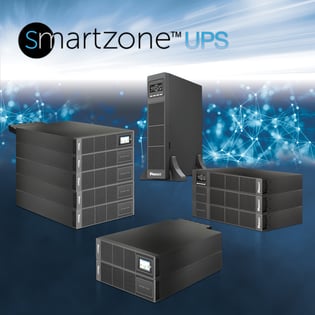 In today's fast-paced world, we rely on our devices and systems more than ever before. We expect them to be always on and ready for us to use, without any interruptions. Even a momentary downtime can impact businesses, leading to lost revenue, missed opportunities, and reputational damage.
In today's fast-paced world, we rely on our devices and systems more than ever before. We expect them to be always on and ready for us to use, without any interruptions. Even a momentary downtime can impact businesses, leading to lost revenue, missed opportunities, and reputational damage.
So, how do you protect against downtime and ensure continuous access to the devices and systems upon which we all depend? Uninterruptible Power Supplies (UPSs) are the answer. UPSs, like those offered by Panduit, are specifically designed to prevent costly downtime by safeguarding critical systems from power failures. With a UPS in place, your network can stay up and running, even in the face of power outages and other events.
Choosing Your UPS
While it may seem daunting to choose the right UPS for your business, fortunately, Panduit has made this decision easy with their comprehensive 8-step guide. By following their guide, you can confidently select the perfect UPS that aligns with your unique business needs. Check it out here!
When thinking about selecting your UPS, Panduit recommends starting with these questions:
- What voltage is available where the UPS will be installed?
- What is the size of the IT load (kVA/kW)?
- How critical is the IT load?
- How much UPS capacity is needed for future growth?
- How long should the batteries run during a power failure?
Once you have answered those questions, you should have a solid idea of your requirements for your UPS. The UPS you choose should meet or exceed those requirements.
How Your UPS Works
Depending on the UPS you choose, there are a couple of different ways it could work.
Your UPS is likely either Line Interactive or Double Conversion. Line Interactive UPSs are ideal for areas that already have relatively reliable power services, where downtime is less likely; they also offer some savings over other options. Double Conversion UPSs correct all power consistencies and protect your network from any fluctuations in power service, offering the support you need for mission-critical operations.
UPSs offer different critical power loads, measured in kilowatts (kW) or megawatts (mW). That's why you need to think about the size of the IT load when considering which UPS to buy. Depending on what applications you need to support, you may be able to opt for a row UPS that's more modular, a larger, centralized UPS, or a rack UPS for a distributed computing environment.
Different UPSs use different batteries. The most common type of battery is the VRLA battery, also known as a lead acid battery. The downside is that these batteries require more maintenance and replacement every 3-4 years. On the other hand, lithium-ion batteries, which are more costly but don't need to be replaced as frequently, may be a better investment overall.
Add-Ons for Your UPS
There are several ways you can consider adding on to what your UPS is capable of doing, especially when it comes to monitoring and management. Ever wanted to manage your UPS remotely, without having to have someone onsite to check on it? You may want a Network Management Card (NMC)! NMCs offer all sorts of benefits, like a web-based user interface, intelligent shutdown, and integration with environmental and security sensors for remote management of power, thermal conditions, and security events. If you want even more insights than that, you'll want to check out Panduit's Cloud-Based Data Center Infrastructure Management (DCIM) software, which works with the NMC to centralize monitoring and analytics across your network.
At the end of the day, choosing the right UPS for your network is one of the most important decisions you can make. Panduit's 8-step guide makes it easy to explore your options and determine what functions you require. Check it out here.
Contact your local Accu-Tech representative to learn more about Panduit's UPSs and talk about the right options for you.


.png?width=58&height=58&name=X_logo_2023_(white).png)
